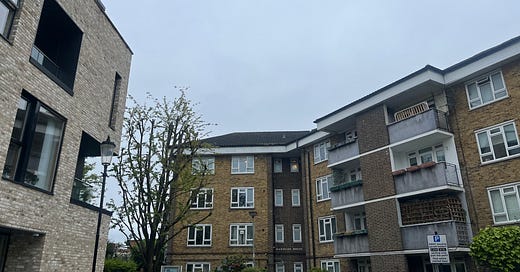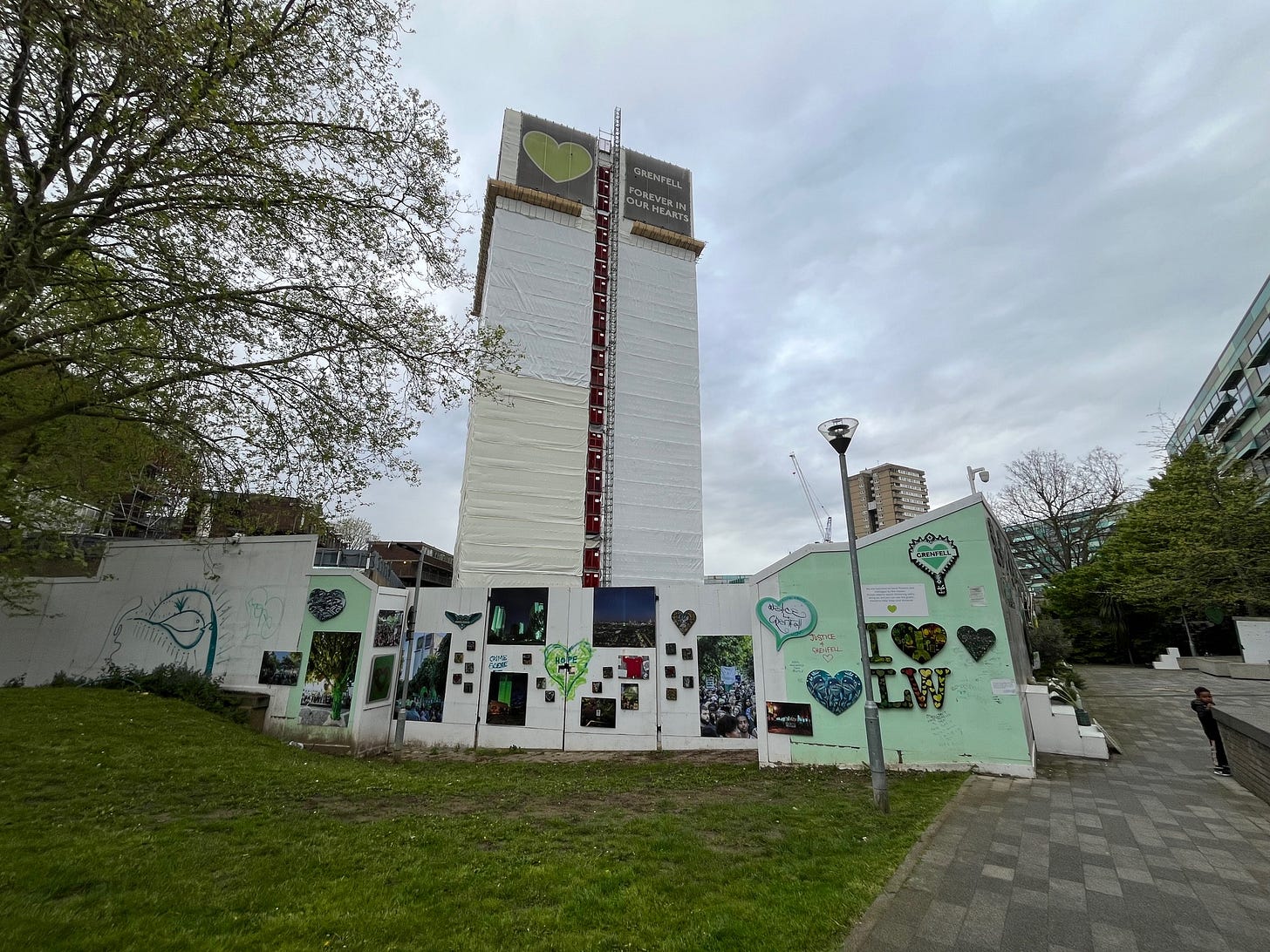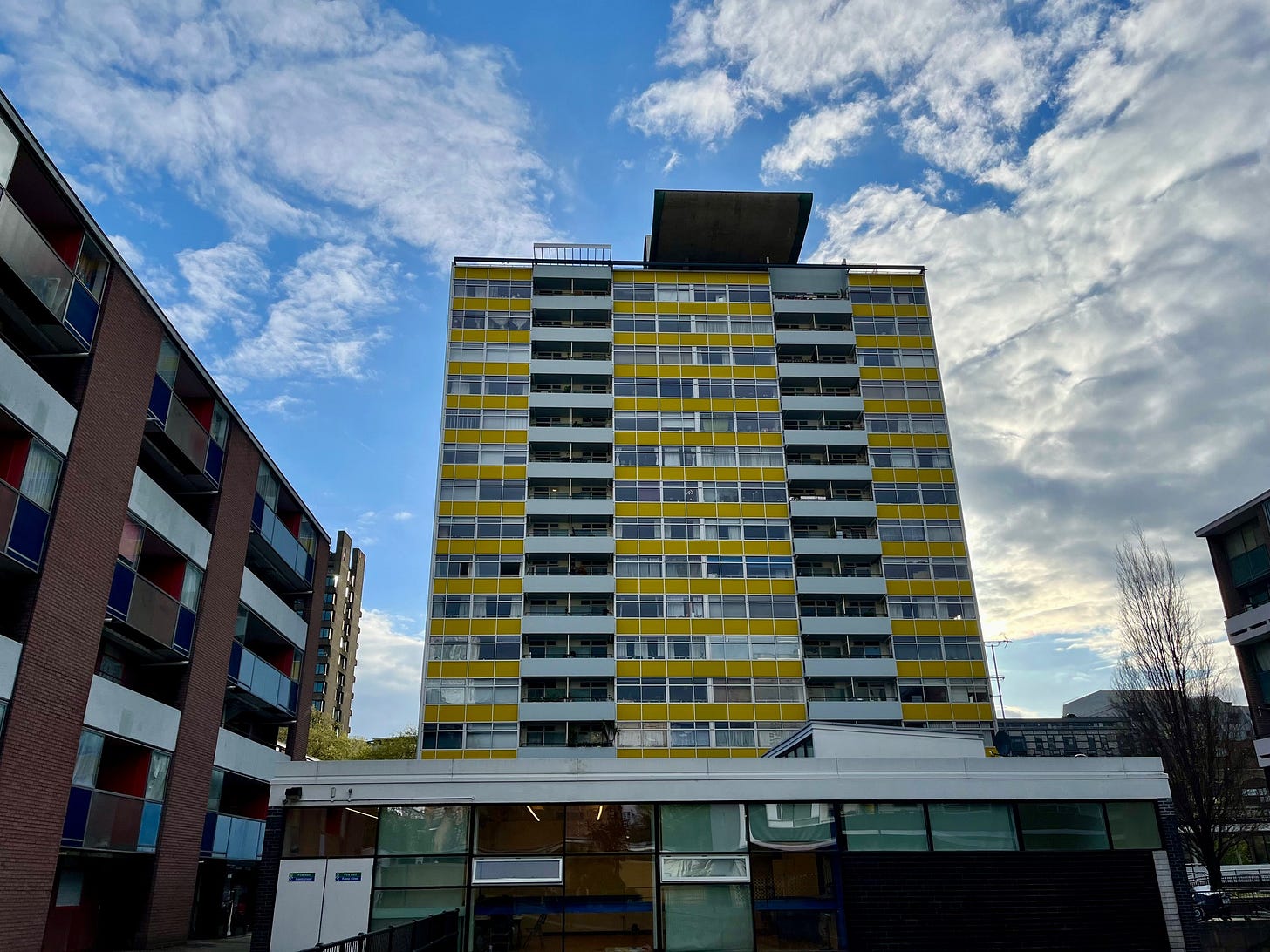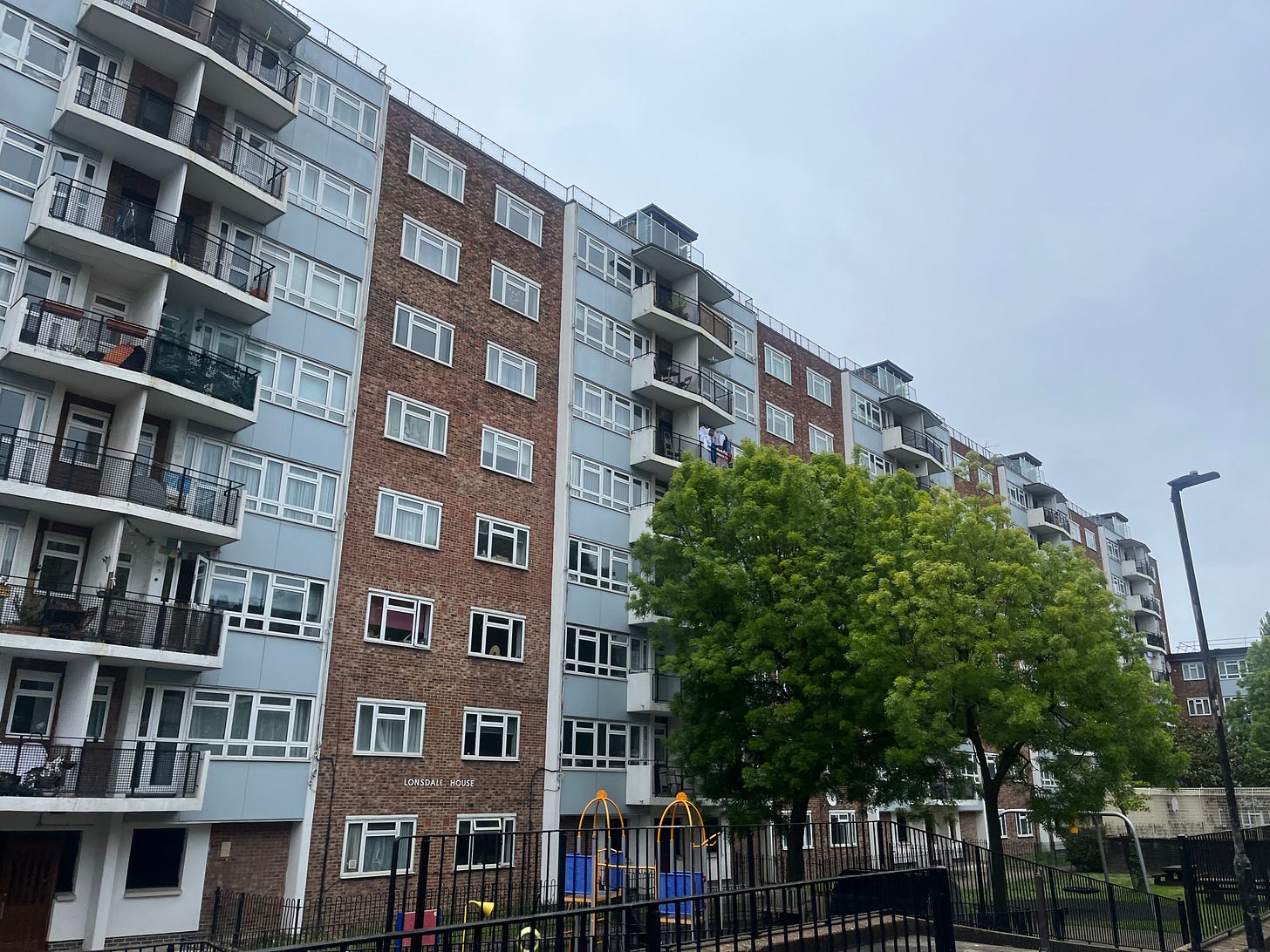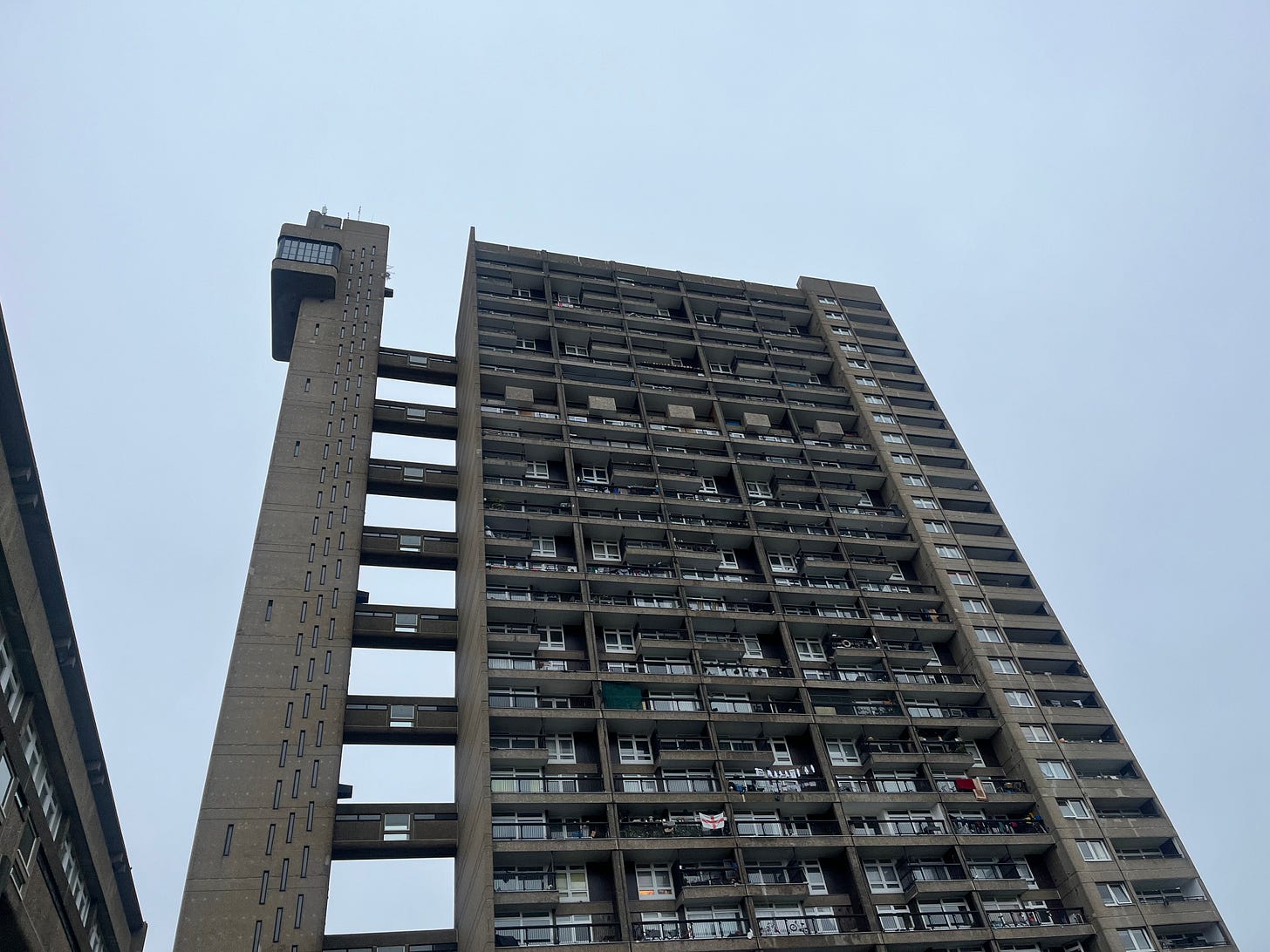Will Starmer Rebuild What Thatcher Tore Down?
On the Tories' Wrongs, Labour's Failures, and What Keir Starmer Probably Won't Do
For the last 50 years, the Conservative Party has been a talismanic force in British politics, wielding its power to make the lives of the British demonstrably worse. Since neo-conservative darling Margaret Thatcher became Prime Minister in 1979, the Tories have been increasingly committed to hacking away at Britain’s social safety net by privatizing major industries like utilities and railways and sharply limiting public spending, all while lowering taxes for the rich. Thatcherism gave way to “austerity” as Prime Minister David Cameron slashed funds for early childhood centers, anti-poverty programs, and social security, arguing that this would help the nation’s economy recover from the 2008 stock market crash. Instead, Cameron’s cruel spending cuts lead to even longer NHS waiting lists, overcrowded classrooms, shuttered social service centers, and more Britons in poverty.
Housing has also become a source of stress for many working-class Britons; housing costs, which already consumed the largest slice of household budgets in the United Kingdom, continue to skyrocket. The average home price has hit £375,131, an all time high, while rents have increased by an average of 9% nationwide in just one year. And while real estate executives and slumlords rake in growing piles of cash by hiking the rent each year, working class tenants in the United States and the United Kingdom are losing their homes — homelessness spiked by 12% in the U.S. and 14% in England during 2023, at least partially because of the catastrophic rise in rents.
Thatcher’s fingerprints are all over the United Kingdom’s ever-worsening affordability crisis — her administration introduced a harmful policy called “Right to Buy” in 1980, which allowed those living on council housing estates (the United Kingdom’s version of public housing) to purchase their homes at an extremely steep discount. Thatcher’s policy also prevented local councils from using proceeds from Right to Buy sales on new public housing development, so the policy drastically reduced the nation’s public housing stock. Furthermore, as the rent revenues of local councils shrunk drastically, social housing rents began to skyrocket, forcing council tenants who did not participate in Right to Buy to help subsidize their neighbors’ home purchases. The scope of Thatcher’s signature housing policy was massive —the Treasury made 47 billion on the sale of council homes, money which has not been reinvested in meeting the housing needs of Britain’s working class. More concerningly, 4.5 million council homes have been transferred to private ownership over the last 44 years, making it harder and harder for families in need to find suitable homes. Today, council housing waiting lists are so long that it can take families up to 55 years to be placed, showing just how severely the British state has neglected its most vulnerable denizens.
“No single piece of legislation has enabled the transfer of so much capital wealth from the state to the people.”
- Michael Heseltine, Housing Minister under Margaret Thatcher, on Right to Buy
Right to Buy was also paired with a number of interventions to deregulate financial markets, which worsened the policy’s already harmful effects. Restrictions on mortgage lending were removed, pushing working-class families to accept risky home loans if they opted to purchase their council home. The housing budget was slashed, falling by £310 million in 1985 alone. Furthermore, weak regulations in the housing market made it possible for corporate slumlords to snap up loads of Right to Buy properties and rent them out on the private market for a steep premium. As investigations of the British housing market have shown, more than 40% of homes first sold through Right to Buy are now rented out in the private market. Yet for Thatcherites, this would hardly be considered a failure — wealthy landlords are making larger and larger profits each year on a privatized asset. The Tories don’t care that the dearth of social homes is making it harder and harder for people to get by, even if they’re on housing benefits — instead, they’d rather work towards cutting those benefits, and pushing the working class closer and closer to precarity. Increased profits for slumlords were just an added bonus.
Manning House, a council house building that has lost units to Right to Buy
Thatcher claimed that Right to Buy was a step towards making the United Kingdom a “property-owning democracy”, but in reality, it was an attempt to shift the way Britons saw housing. Thatcher didn’t want the home to be understood as a place where families lived; instead, she worked tirelessly to transform the house into a valuable financial asset. Those who “worked hard enough” (or more realistically, had family support or a high-paying job) to get on the property ladder were to become part of the asset class; a group of people who were intensely invested in local property values in the hopes of one day selling their homes at a (speculative) profit, and therefore were less likely to support “socialistic” policies.
But home purchasers were arguably not the primary beneficiaries of Right to Buy. Of course, most of the windfall from Right to Buy lined the pockets of big banks and the private rental sector, as the deregulation of the mortgage market and the privatization of council homes created new assets for the financial sector and corporate landlords to speculate on. State-sponsored homes were converted into free-market rentals, and the working class tenant was left struggling to keep up with their ever-growing housing costs. Ultimately, Thatcher did not create a “property-owning democracy” — she created a dictatorship of speculation, financialization, and capitalistic exploitation where it was unthinkable to consider that the state could have an active role to play in ameliorating Britain’s housing needs. Speculation, ever-growing profits for the real estate sector, and privatization became just as central to British life as the monarchy.
Decades of Tory dominance has created an untenable, unsafe, and unaffordable housing market for most working-class UK denizens. And no singular event symbolizes this failure better than the Grenfell fire, an entirely preventable and harrowing crime the British state committed against the working-class residents of a large tower-in-the-park style council estate in June of 2017. At Grenfell, 72 people lost their lives because the building’s hyper-flammable cladding, which was selected by the Conservative-led Borough of Kensington and Chelsea to cut costs and make the building more attractive to the wealthy residents of Kensington who lived nearby, made the fire especially severe.1 Building supply companies maximized their profits, while the local council cut its costs, showing just how perverse public-private partnerships and profit motives can be in the housing sector. And of course, this disaster can be at least partially linked to Thatcher’s reign of deregulation — her administration slashed building code regulations, which allowed ACM, the highly flammable cladding material used at Grenfell, to be used throughout the country, even though it was banned in most other European nations.2
A memorial to the victims of the Grenfell fire on the estate’s site
And residents themselves knew the Grenfell fire did not come out of nowhere — tenants were exceedingly aware of the horrifying risks that decades of austerity, deregulation, and marginalization of the council housing sector posed to their homes.3 While tenants, including Eddie Daffarn, the co-founder of the Grenfell Action Group, had consistently voiced concerns about fire risk, no action was taken by the Tenant Management Organization (TMO) or the local council. Instead, organizers like Eddie were villainized by these institutions for simply trying to keep their homes safe. After the fire, decades of Tory austerity and marginalization of council housing tenants, the poor, and the working class was brought to light, but this acknowledgement came at an unspeakable cost.
Forty years of Tory housing policy led Britain on a crash course towards one of the world’s largest housing disasters, as deregulation, state retrenchment, and mass speculation made housing less accessible, more expensive, and less safe. It pushed nearly 1 in 5 Britons to go on housing benefits just to stay in their homes, and it stole the lives of 72 vibrant community members who were murdered by the state in the Grenfell fire. At the same time, Tory housing policy made developer profits skyrocket, as the nation’s nine largest developers paid £1.8 billion to their shareholders in 2017, a nearly 400% increase in profit for British real estate investors since the 2008 financial crisis.4
With all of this considered, it should be no surprise that, as housing costs continue to rise, UK voters sought a different way forward in their recent election on July 4th, 2024, electing a Labour government for the first time in fourteen years. But as Keir Starmer’s Labour Party assembles its large majority in Parliament, one question remains — does Labour, an ostensibly left-leaning party, offer working-class families a meaningful solution to Britain’s decades-long housing disaster? Or will Starmer’s Labour Party continue speeding down the road to the United Kingdom’s next deadly housing disaster.
If you were to take a historical view of the Labour Party, there would be reason for optimism that Starmer’s administration would push for meaningful change to the UK’s housing system. The party, which has traditionally been a political home for left-wing voters, has a legacy of pushing for strong social programs, like public education, nationalized industries, social security, and the NHS. The Labour Party also played a prominent role in the development of the United Kingdom’s social housing sector; between 1945 and 1951, the Labour government led by Clement Attlee constructed over 800,000 council homes, with nearly 200,000 homes built in 1948 alone.5 In the postwar period, Nye Bevan, Clement Attlee’s Minister for Health and Housing, advocated fiercely to ensure these homes were decent and dignified, pushing for multiple bathrooms in each flat, along with wrap around services by council estates, like schools, laundry facilities, and houses of worship.6 Ultimately, post-war council estates provided decent, affordable, and decommodified homes for millions of families, and showed the Labour Party’s initial commitment to using the tools of the state to meet housing needs, to fight back against developer speculation, and to make housing a public good.7
Golden Lane Estate, a council estate built in the post-war period
But the Labour Party has changed drastically since the Attlee premiership in the late 1940s — eleven years of Thatcherism left gaping holes in Attlee’s social safety net, while also making it almost unthinkable to propose that the state should intervene in private markets for the public good. So, of course, the Labour Party abandoned its commitment to rebuilding the welfare state or providing public goods, and New Labour was born.
Tony Blair’s Labour Party, which first won a Parliamentary majority in 1997, did not embrace the obligations of the state to provide dignified homes for its citizens — instead, it embraced free markets, homeownership, and large scale voluntary stock transfer, a policy where council housing developments would be transferred to charities or non-profit organizations. Large scale voluntary stock transfer became a particularly prominent part of New Labour’s housing program, as council homes were at least partially privatized to generate revenue for repairs.8 While the policy raised £14 billion in revenue for estate repair, it also represented a classic, neoliberal approach — instead of investing in the existing welfare state, New Labour sought to pass on its responsibilities to non-state actors, like non-profits, in the hopes that they could absolve themselves from the state’s responsibility to build and subsidize housing.9 Of course, these policies should come as no surprise — Blair himself is a huge landlord, with a property portfolio valued at over £33 million.
In 2015, the Labour Party took a brief, blissful sojourn from the politics of neoliberalism, instead electing bona-fide socialist Jeremy Corbyn as their party leader.10 Corbyn, a trade unionist who was elected after the resignation of party leader Ed Miliband, beat three Blairite prime ministers who broadly embraced the approach of New Labour, showing that there was, in fact, broad popular support for socialist leadership in the United Kingdom. And for the first time since the post-war period, the Labour Party actually led on housing. Corbyn used his leadership role to call for a government reinvestment in council housing, proposing a £75 billion plan to build 100,000 new council homes each year. This plan, which had real potential to address Britain’s severe housing shortage and national affordability crisis, was also popular with voters, as Corbyn’s housing plans garnered more support than any other prime minister candidate in 2019. For a brief moment, it seemed as if the British could win public homes, funded by government borrowing and taxes on the rich, as a universal public good. But Corbyn’s Labour Party lost the 2019 Parliamentary elections, so he stepped down from his leadership position, despite the fact that Labour membership had grown sharply under his radical, clear vision for a socialist state.
Lonsdale House, part of a council estate in Notting Hill, London
In the wake of Labour’s 2019 defeat, Keir Starmer emerged as the consensus leadership candidate for the party’s centrist wing. Seeking to usher the Labour Party back to the center, Starmer was quick to decry Corbynism, while standing for little else (with the exception of transphobia and Israel’s genocide in Gaza, of course). But a disastrous couple of years for the Conservative Party, including the whirlwind Premiership of Liz Truss, had changed the political landscape in the United Kingdom, and Starmer’s Labour Party became well-positioned to take over Parliament in the 2024 general elections. Even though voters acknowledged that Starmer was a dull leader with uninspiring policy proposals, the UK was simply done with Conservative rule, so Labour won a commanding parliamentary majority.
While voters weren’t excited about Starmer, and many LGBTQ+ and pro-Palestinian voters justifiably opted for the Green Party due to Starmer’s offensive comments, Labour still ended up with a 174 seat majority in Parliament, the party’s largest bloc since Blair took office in 1997. Yet Starmer’s plans to address the country’s increasingly dire housing crisis are dull, market-centric, and feed into the same financialized, speculative dynamics that the Tories spent decades fostering in the British housing market.
Starmer’s landmark housing proposal is his commitment to reintroduce local building targets and build 1.5 million new homes over the next five years. Unsurprisingly, however, Labour’s plan is not particularly focused on affordability, choosing to instead prioritize “economic growth”. Starmer argues his administration will meet housing targets by cutting back the state’s planning process, which, though certainly flawed, has long served as a form of government regulation against sprawl and developer overreach. While it is likely that the planning process needs some reforms to meet Britain’s dire housing needs, scholars like Gareth Fearn have argued that building more homes alone will not be enough to meet the housing needs of the United Kingdom, especially due to the nation’s shrinking council housing stock. Ultimately, Starmer’s housing calculations are based on the risky assumption that simply infusing more (privately-built) housing supply into the market will lower housing costs. And while the new supply Starmer’s Labour Party is advocating for will likely alleviate the nation’s severe housing shortage, it’s hard to imagine that private developers will build unless huge profits are available to them.
Writers like Grace Blakeley have pointed out the fallacies in Starmer’s argument, arguing that developer land-banking, a process where speculators purchase large swaths of land, win planning approval for development on their parcels, and subsequently delay development until profits can be maximized, also restricts the nation’s housing production. Blakeley has pointed out that the UK’s largest developers have increased their landholdings by 67% over the last decade, but this substantial increase in developer-owned land has not been paired with a similar rise in housebuilding. If private, profit-driven developers won’t build new homes until their potential revenues are maximized, it seems foolish to rely on these same developers to pick up their tools and usher in a new era of housing production. Furthermore, it seems silly to assume that these same private developers, who are tasked with providing larger and larger returns to their investors, will tolerate any reductions in housing costs — instead, these speculators will continue to leave their properties fallow until they can rake in cash.11
Yet Starmer, who has argued that Labour must stand with “the builders, not the blockers (of housing plans)”, has offered few solutions to the growing issue of developer land-banking, only offering weak commitments to hinder the practice. Without a concrete plan to stop developers from price-gouging working-class people out of the housing market through land-banking, the Labour Party is essentially endorsing mass speculation of the nation’s undeveloped land. Under Starmer’s government, greedy landlords and developers will still have nearly unchecked power to raise housing costs, destabilize families, and displace Britons. More housing may be produced, but working-class Britons will still be left behind.
Starmer’s commitments to protecting tenants are similarly weak; despite remaining committed to ending no-fault evictions, the Labour Party had initially more sweeping reforms to the private rental sector, including the creation of a national landlord registry and a legally binding Decent Homes Standard. However, these proposals were been dropped from Labour’s platform in an attempt to appease landlords. Earlier commitments to affordable housing production were also dropped from Labour’s manifesto — the party initially pledged to make 40% of housing units in planned “New Towns” affordable, but this pledge was also silently removed from the party’s manifesto.
Instead, Starmer has committed to continuing Thatcher’s “property-owning democracy” — under his tutelage, Labour, the party that built 800,000 social homes during the post-war period, is branding itself as the “party of homeownership”.12 The Labour Party has frustratingly refused to reconsider Thatcher’s harmful “Right to Buy” policy, with Starmer calling the sale of council homes “…a legitimate route for working-class aspiration.” But Starmer’s homeownership agenda goes beyond the sale of council homes — his “Freedom to Buy” proposal, which allows people to access a government-backed mortgage with low deposits, seeks to get young Britons (who can afford a mortgage of any sort) on the property ladder seems to have replaced Labour’s commitment to providing decent housing to all of its residents through the tools of the state.
Labour is also offering few solutions for local councils, many of which are hurtling towards bankruptcy after being asked to provide more and more services with smaller and smaller budgets. While these bodies do crucial work, both operating council estates and helping to place the growing number of homeless families in increasingly expensive temporary accommodation, they do not seem to be a priority for the new government. Indeed, Rachel Reeves, Labour’s new Chancellor, has repeatedly indicated that the party will not increase social spending, and will instead look towards the private sector to solve crises like infrastructure and housing. For local councils, which are now spending a record £1.7 billion on temporary housing, Reeves’ commitment to continued austerity reads like a death sentence — councils have reported they may need to sell off more of their public housing stock to remain afloat.
Trellick Tower, a famous council estate in North Kensington, London
For a party that has seized a historic majority in Parliament, Labour’s housing reforms are paltry, and replicate the same neoliberal logic that created the housing crisis the nation faces today. Years of austerity, cuts to housing budgets, and growing council housing waiting lists have left British housing in a precarious position, one that can only be addressed with aggressive, radical action, that gives the state a central role in the production of new housing.
There is a clear path forward for Starmer to change course — Jeremy Corbyn’s £75 billion plan to build 100,000 new council homes each year while also supporting social housing associations is ambitious yet radical enough to meet United Kingdom’s political moment. The 2019 Labour housing plan centered the private market’s fundamental inability to provide decent housing for all Britons, and subsequently gives the state an active, central role in developing housing for all of its citizens. Furthermore, it calls for the end of Right to Buy, protecting council housing from privatization and speculation. Corbyn’s plan also emphasized the importance of working towards universalist state-developed housing system, where councils could compete directly with the private market, helping to eventually crowd out private landlords and developers. And Labour’s 2019 plan was politically popular — a 2019 survey of British voters found that Britons believe building more council housing will help to address the housing crisis.
The United Kingdom needs a leader who is willing to build public infrastructure for its citizenry. It needs a return to the postwar era, when the Labour Party, committed to providing housing as a basic public good, built 800,000 council homes in under a decade. This type of aggressive public spending and construction program, which would fully fund local councils and help them build public housing, would meaningfully ameliorate the United Kingdom’s housing crisis while also making housing a public good. Keir Starmer’s market-driven housing policies will only continue the United Kingdom’s path towards housing speculation, financialization, and displacement. And with a 174 vote majority, voters sure should expect better.
Peter Apps, Show Me the Bodies: How We Let Grenfell Happen (Rearsby, Leicester, UK: W.F. Howes Ltd, 2023), 132-135.
Peter Apps, Show Me the Bodies: How We Let Grenfell Happen (Rearsby, Leicester, UK: W.F. Howes Ltd, 2023), 28-29, 36-37.
Constance Smith, “After Grenfell: Accumulation, Debris, and Forming Failure in London,” Journal of the Royal Anthropological Institute 29, no. S1 (February 10, 2023): 151–66, https://doi.org/10.1111/1467-9655.13907.
Tom Archer and Ian Cole, “The Financialisation of Housing Production: Exploring Capital Flows and Value Extraction among Major Housebuilders in the UK,” Journal of Housing and the Built Environment 36, no. 4 (February 27, 2021): 1367–87, https://doi.org/10.1007/s10901-021-09822-3, 1377-1378.
John Boughton, Municipal Dreams: The Rise and Fall of Council Housing (London, UK: Verso, 2019), 105.
John Boughton, Municipal Dreams: The Rise and Fall of Council Housing (London, UK: Verso, 2019), 94-99.
John Boughton, Municipal Dreams: The Rise and Fall of Council Housing (London, UK: Verso, 2019), 93.
John Boughton, Municipal Dreams: The Rise and Fall of Council Housing (London, UK: Verso, 2019), 251.
Norman Ginsburg. "The Privatization of Council Housing." Critical Social Policy 25, no. 1 (2005): 115-135, 132.
Hilary Wainwright. "The Remarkable Rise of Jeremy Corbyn." In New Labor Forum, vol. 27, no. 3, pp. 34-42. Los Angeles, CA: SAGE Publications, 2018.
Tom Archer and Ian Cole, “The Financialisation of Housing Production: Exploring Capital Flows and Value Extraction among Major Housebuilders in the UK,” Journal of Housing and the Built Environment 36, no. 4 (February 27, 2021): 1367–87, https://doi.org/10.1007/s10901-021-09822-3, 1378-1379.
John Boughton, Municipal Dreams: The Rise and Fall of Council Housing (London, UK: Verso, 2019), 105.

